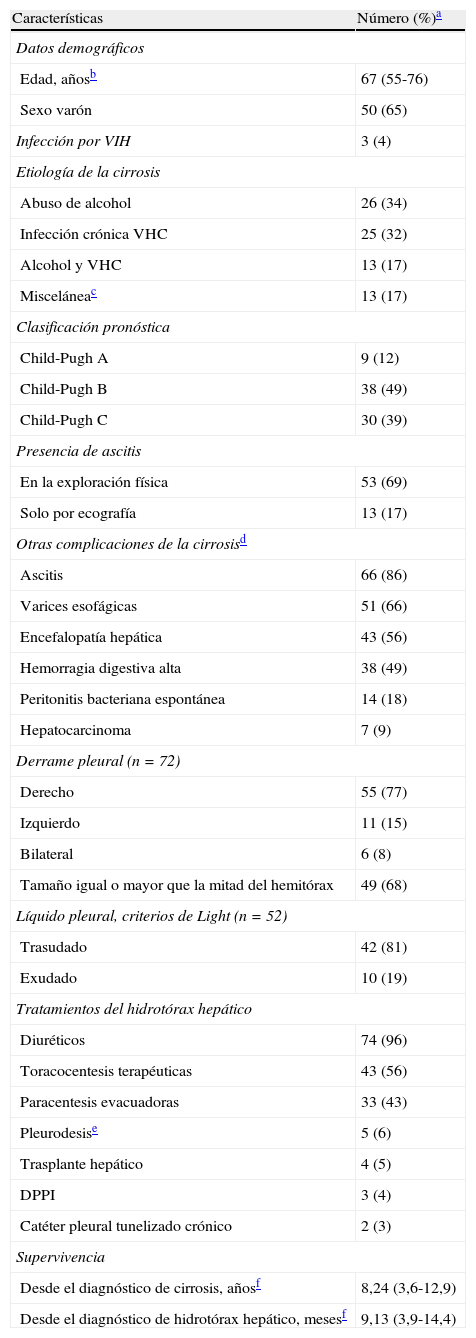Describir las características clínicas, el tratamiento más efectivo y la supervivencia de pacientes cirróticos con hidrotórax hepático (HH).
Pacientes y métodoEstudio descriptivo y retrospectivo de una cohorte de pacientes consecutivos con HH sometidos a una toracocentesis diagnóstica. Entre otros parámetros, se evaluaron las características bioquímicas y radiológicas del derrame pleural, el control del mismo con los tratamientos instaurados y los factores que condicionaron la supervivencia.
ResultadosSe incluyeron 77 pacientes con HH. El 14% no tenía ascitis. El HH fue derecho en el 77% de los casos y ocupó la mitad o más del hemitórax en el 68%. El 81% de los líquidos pleurales eran trasudados. El HH refractario a diuréticos (27%) se pudo controlar con trasplante hepático, derivación portosistémica percutánea intrahepática (DPPI) o catéter pleural tunelizado. En cambio, la pleurodesis fracasó en la mayoría de las ocasiones. La mediana de supervivencia fue de 9,1 meses, y solo se vio influida favorablemente por el trasplante hepático.
ConclusionesEl HH tiene una supervivencia limitada, solo modificable con el trasplante hepático. En los casos refractarios al tratamiento diurético se debe considerar la DPPI o el catéter pleural tunelizado.
To describe the clinical characteristics, the most effective treatment and survival of cirrhotic patients with hepatic hydrothorax (HH).
Patients and methodDescriptive and retrospective analysis of a cohort of consecutive patients with HH undergoing a diagnostic thoracentesis. The biochemical and radiological features of the pleural effusion, its control with different therapies and the factors affecting survival were evaluated, among other parameters.
ResultsSeventy-seven patients with HH were included, of whom 14% did not have ascites. HH was right-sided in 77% of the cases, and occupied half or more of the hemithorax in 68%. Pleural fluids were transudative in 81% of the cases. Diuretic-resistant HH (27%) could be managed with liver transplantation, transjugular intrahepatic portosystemic shunt (TIPS) or indwelling pleural catheters. However, pleurodesis failed in most patients. Median survival was 9.1 months, and it was only favorably affected by liver transplantation.
ConclusionsHH has a limited survival, only influenced by liver transplantation. In diuretic-resistant cases, TIPS or pleural indwelling catheters should be considered as a management option.
Artículo
Comprando el artículo el PDF del mismo podrá ser descargado
Precio 19,34 €
Comprar ahora







